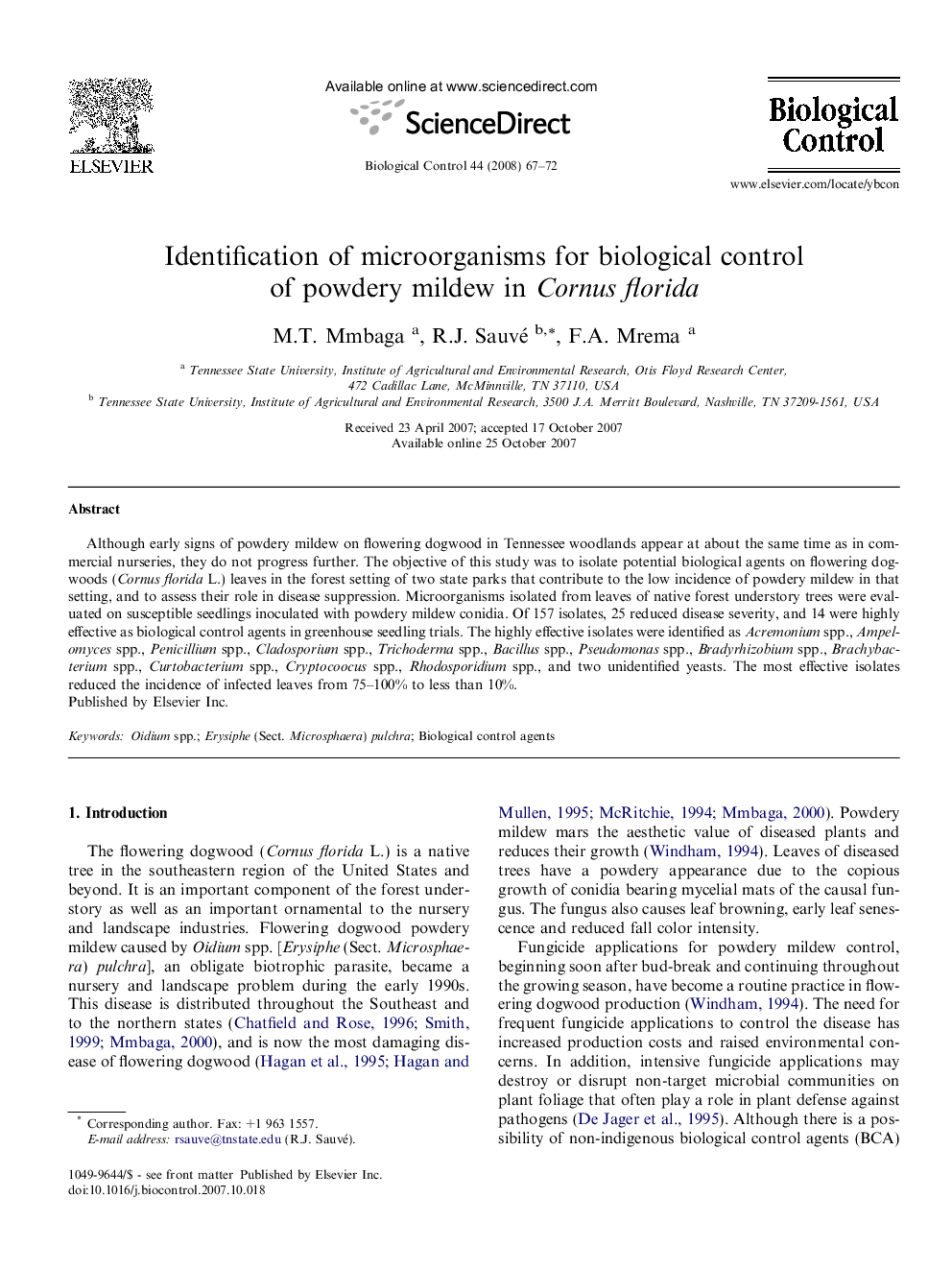| Article ID | Journal | Published Year | Pages | File Type |
|---|---|---|---|---|
| 4504881 | Biological Control | 2008 | 6 Pages |
Although early signs of powdery mildew on flowering dogwood in Tennessee woodlands appear at about the same time as in commercial nurseries, they do not progress further. The objective of this study was to isolate potential biological agents on flowering dogwoods (Cornus florida L.) leaves in the forest setting of two state parks that contribute to the low incidence of powdery mildew in that setting, and to assess their role in disease suppression. Microorganisms isolated from leaves of native forest understory trees were evaluated on susceptible seedlings inoculated with powdery mildew conidia. Of 157 isolates, 25 reduced disease severity, and 14 were highly effective as biological control agents in greenhouse seedling trials. The highly effective isolates were identified as Acremonium spp., Ampelomyces spp., Penicillium spp., Cladosporium spp., Trichoderma spp., Bacillus spp., Pseudomonas spp., Bradyrhizobium spp., Brachybacterium spp., Curtobacterium spp., Cryptocoocus spp., Rhodosporidium spp., and two unidentified yeasts. The most effective isolates reduced the incidence of infected leaves from 75–100% to less than 10%.
